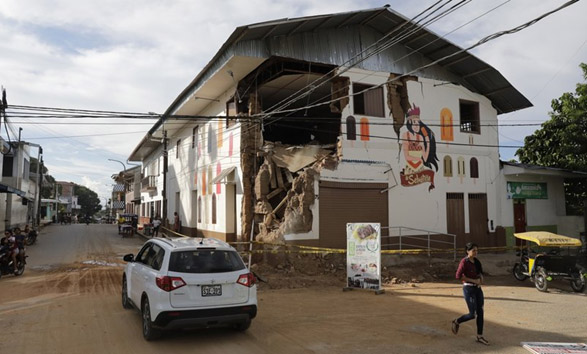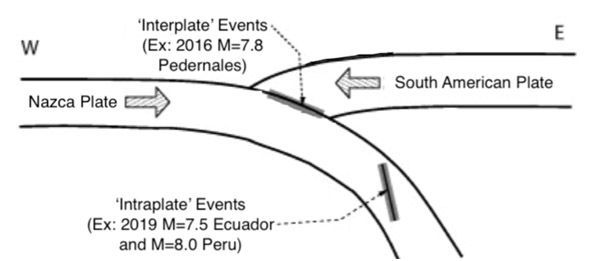A powerful Mw 8.0 earthquake struck a remote area of the Amazon Jungle in Peru at 2:41 a.m. local time on Sunday, May 26, 2019. The epicenter took place within the Reserva Nacional Pacaya-Samiria in the Loreto region of northern Peru. The damage was limited due to the combination of the earthquake’s relatively deep hypocentral location (around 110 kilometers) and the sparsely populated zone in which it occurred. According to official information, up to May 30th, the earthquake caused 2 fatalities, 17 injuries, one collapsed bridge, 5 affected pedestrian bridges, several landslides, about 51km of affected roads, and damage to numerous of structures including: 46 health centers, 296 school buildings, 15 commercial buildings, 15 churches, which include 5 collapses, and more than 600 uninhabitable residential units, as reported in StEER (COEN, Perú 2019b).

The event was caused by an intermediate-depth normal fault rupture on the Nazca plate, which subducts in an eastern downward motion relative to the South America plate in the Peruvian region at a velocity of approximately 7 cm/year. It was produced by a segment of the subducted plate that has generated frequent earthquakes with focal depths of 100 to 150 km.

How are intermediate-depth earthquakes produced?
Intermediate-depth earthquakes, common in northern Perú and western South America, represent deformation within subducted slabs (that is they are intraplate events), rather than at the shallow plate interface between subducting and overriding tectonic plates. Usually this type of earthquakes causes less damage on the ground surface above their foci compared to similar-magnitude shallow-focus earthquakes, but may be felt at larger distances from their epicenters (USGS, 2019).

Reported damages in constructions
The reported damages may be explained by the local construction practices in which the prevalent materials are masonry and adobe. When properly detailed and built, constructions in these materials have shown to provide good seismic resistance and acceptable performance. Nevertheless, the Seismic Resistant and Design Code NTE.030, approved in 2016, has not been properly enforced, leading to a building stock mainly constituted by structures that lack a proper engineering design and the implementation of high-quality construction practices.
In order to deepen the structural natural hazard engineering (NHE) community’s capacity for reliable post-event reconnaissance, the Structural Extreme Events Reconnaissance (StEER) Network elaborated a Virtual Assessment Structural Team (VAST) Report of the Lagunas Perú May 26, 2019 Earthquake. This report gathers publicly-available information, by (i) providing a summary of the origin of the event and its main seismological features, (ii); presenting a summary of ground motions recorded in two countries; and (iii) summarizing the preliminary reports of damage (StEER, 2019). The information listed below is considered of high relevance both from a technically, and from a policy and decision making perspective, being useful for Field Assessment Structural Teams (FAST), as well as for other practitioners and researchers of the earthquake engineering community.
The mentioned report can be found in the next link:
References
https://earthquake.usgs.gov/earthquakes/eventpage/us60003sc0/executive
https://www.eluniversal.com.mx/english/magnitude-8-earthquake-hits-peru
https://www.apnews.com/3b12f5abea604f19a5ad36d700d090b1
▪ ▪ ▪
Related content
Science Behind The Weather: Measuring earthquakes - The Weather NetworkThe moment magnitude scale for measuring earthquakes is explained. This scale, introduced in 1979, replaced the Richter Scale since it is directly related to the energy of an earthquake and therefore it does not saturate (that is, it does not underestimate magnitudes like other scales do in certain conditions). |

